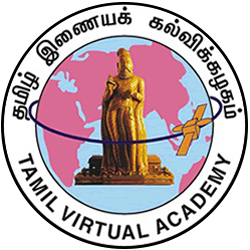Primary tabs
Lesson - 3
C02133: முன்னிலை வினைமுற்றுகள்
II person finite verbs are defined in this lesson. Different inflectional endings indicate singular and plural. There is no distinction between explicit and implicit finites in their inflection. Imperative and desirous verbs (ஏவல், வியங்கோள் வினைமுற்றுகள்) are illustrated.
II person singular explicit and implicit verbs are illustrated. Plural finites of II person are practised in this lesson.
Discussing imperative finites how they are used in spoken Tamil of today is illustrated. These are used without inflectional endings.
Desirous finites are used in the context of blessing, scolding and requesting. They are common to the statuses (திணை), the five genders (பால், எண்) and the three places (இடம்).
Inflexional endings for desirous finites are also listed. The difference between imperatives and desirous finites is spelt out with illustrations.
This lesson thus enables the learner to practise and use II person finite verbs.

